 |
 |
 |
| |
Persistent CD38 expression on CD8+ T lymphocytes
contributes to chronic inflammation in people with HIV, despite ART
|
| |
| |
Aging Worksop Oct 14-15 2022
Poonam Mathur, DO, MPH
Shyam Kottilil MD, PhD
Alip Ghosh, PhD
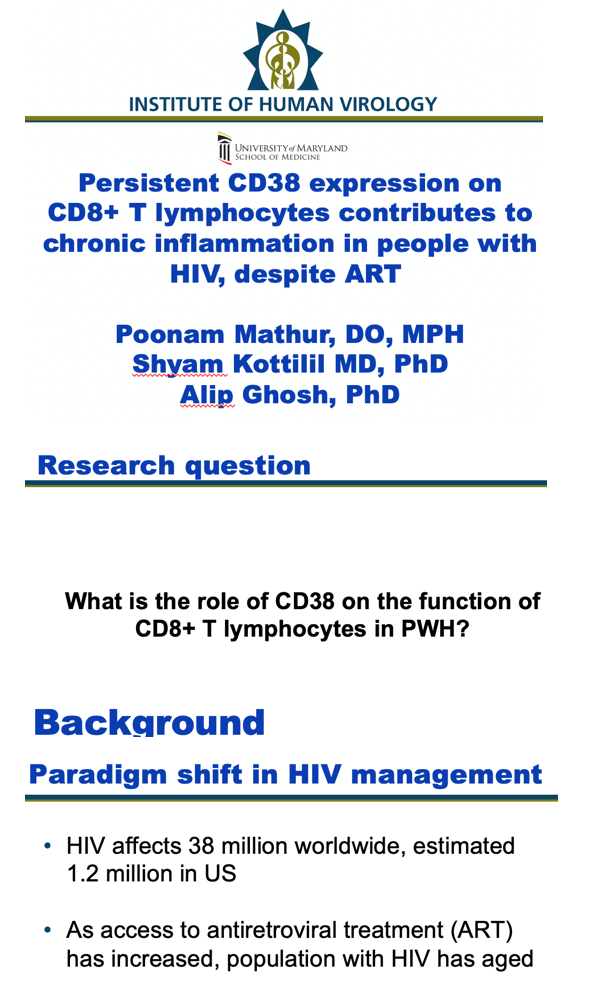
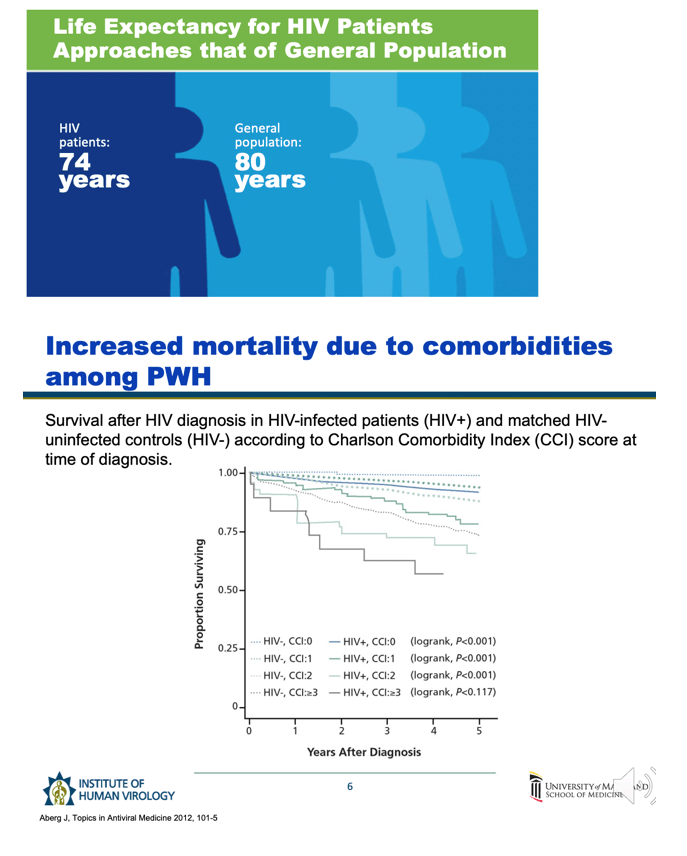
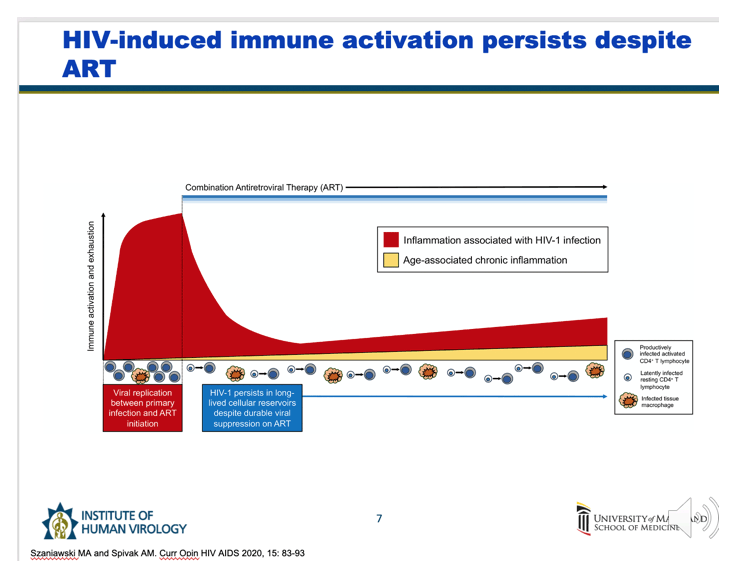
Though lifestyle factors also play a role, one of the main reasons for a high prevalence and incidence of comorbidities among PWH is due to the consequences of immune activation and exhaustion, as shown on the y axis. As you can see on the x axis, after HIV infection, viral replication contributes to immune activation, and initiation ART with subsequent drop in viral replication does reduce immune activation. However, even with viral suppression, there is still HIV-induced immune activation that persists and is exacerbated with age.
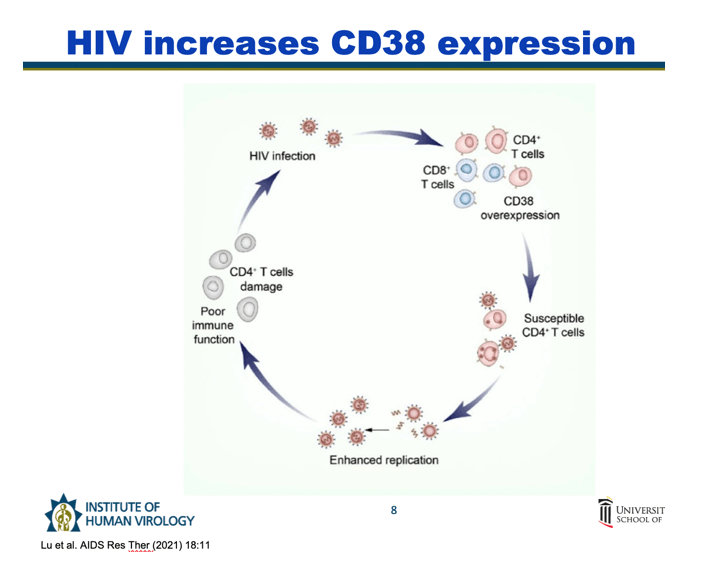
The most significant marker of HIV-induced immune activation is expression of CD38 on CD4+ and CD8+ T cells. This figure is showing that the activation of the immune system in HIV infection results in a vicious cycle, where there is chronic overactivation of CD4+
T lymphocytes and CD8+ T lymphocytes after HIV infection, causing significantly elevated levels of CD38 expression, which then predispose T cells to HIV replication. As CD4+ T lymphocytes are depleted, the disease continues to progress, forming a cycle. As seen in this diagram lymphocyte activation and viral replication are mutually reinforcing, and CD38 expression is a hallmark of the consequences of HIV-induced immune activation. Therefore, our goal was to further understand the contribution of CD38 expression on CD8+ T lymphocytes and how CD38 affects the function of T lymphocytes in people with HIV.
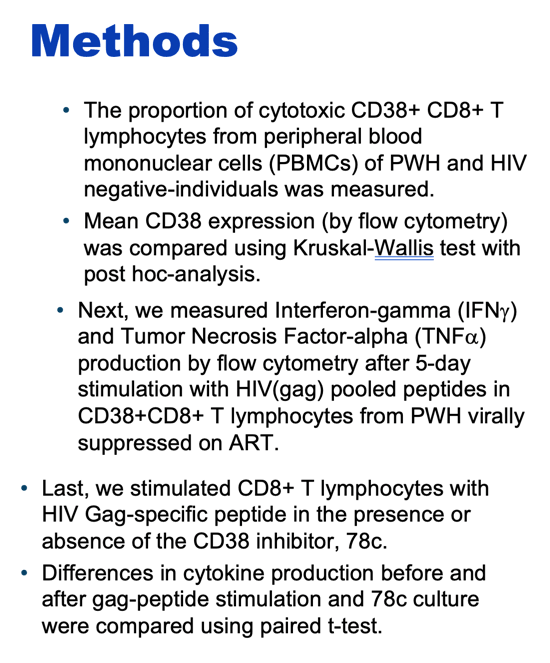
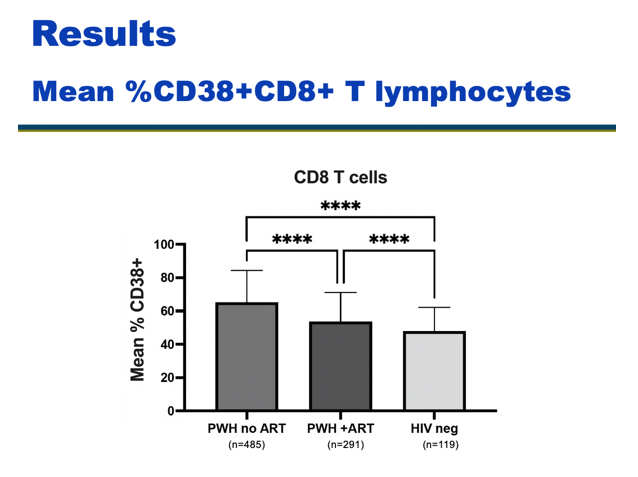
First, we found that the mean frequency of CD38 expression on CD8+ T lymphocytes among HIV-negative individuals, PWH on ART, and PWH not on ART was significantly higher among PWH compared to HIV-negative individuals (p<0.0001). IN addition, though CD38 expression decreased in PWH with the use of ART (p<0.0001), it did not normalize to that of HIV-negative individuals (p<0.0001).
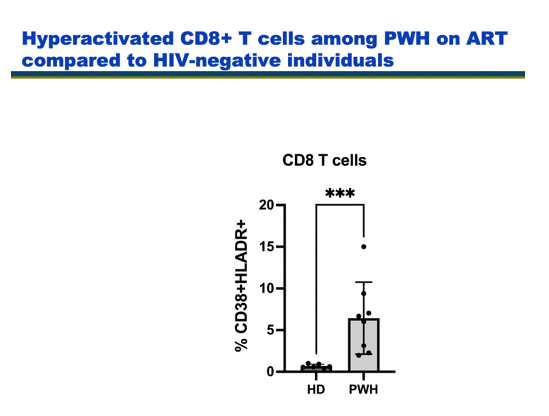
Also, we found that the frequency of hyperactivated CD8+ T cells, expressing the (CD38+HLADR+) phenotype, was significantly higher among PWH on ART compared to HIV-negative individuals (p<0.005)
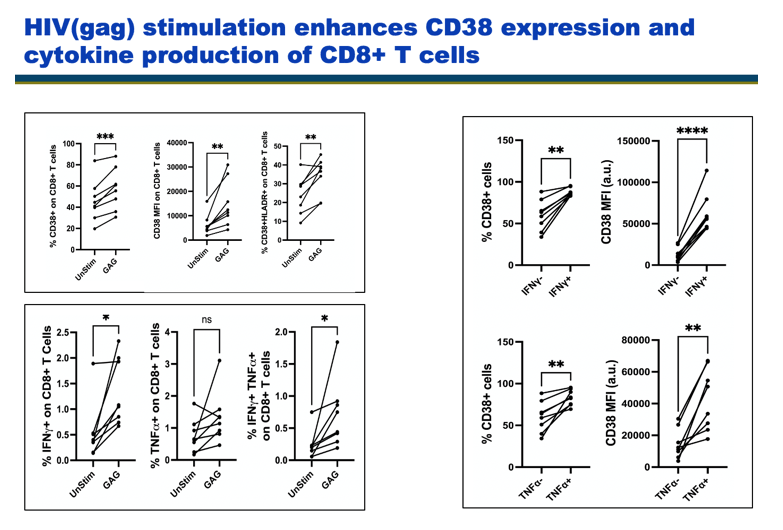
In regards to cytokine production, we first found that Gag-peptide stimulation significantly augmented CD38+ expression on CD8+ T cells (p<0.0005) and also augmented the proportion of CD8 T cells with a hyperactive phenotype
Second, we found that gag stimuatlion significantly augmented IFNγ and TNFα production.
In addition, the IFNγ- and TNFα-producing CD8+ T cells had significantly higher CD38 expression compared to CD8+ T cells that did not produce these cytokines.
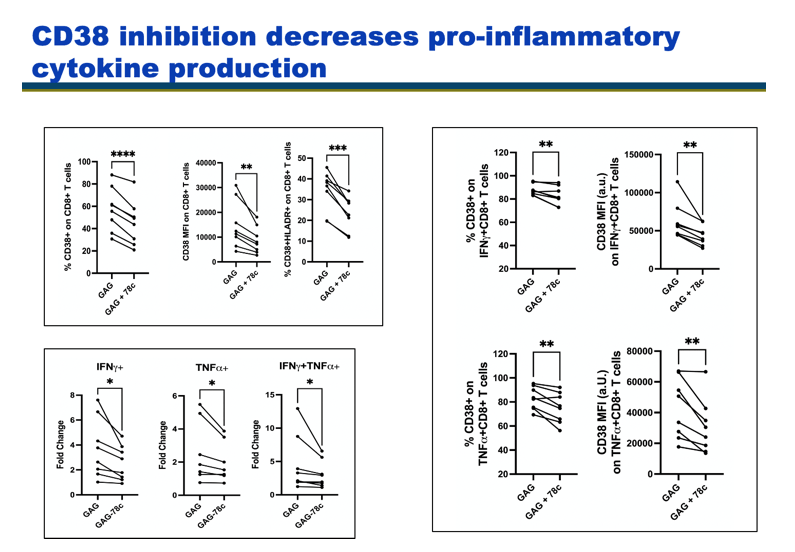
Use of the CD38 inhibitor further verified the role CD38 plays in cytokine production.
First, we found that Gag-stimulated cells cultured in the presence of 78c had significantly lower CD38 expression compared to cells cultured in the absence of 78c (p<0.0001). Also The frequency of hyperactive CD38+HLADR+ cells (p<0.0005) was also substantially reduced in Gag-stimulated cells cultured in the presence of 78c compared to those cells cultured in the absence of 78c.
Second, we found that the frequency of IFNγ+, TNFα+ and IFNγ+ TNFα+ CD8+ T cells was also substantially reduced in Gag-stimulated cells cultured in the presence of 78c compared to those cells cultured in the absence of 78c, as shown in the bottom and on the right-hand side.
Altogether, the CD38 inhibitor significantly decreased proinflammatory cytokine production by HIV-gag-specific CD8 T cells in PBMCs from PWH.
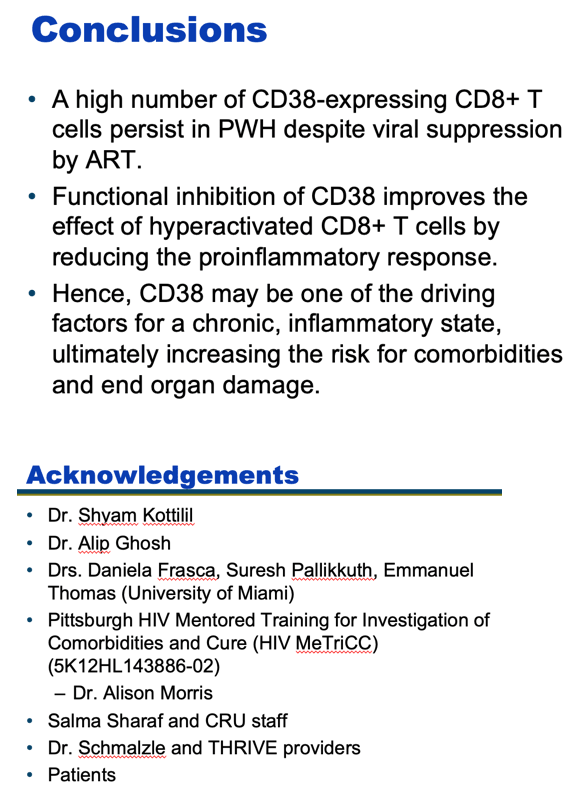
|
| |
|
 |
 |
|
|